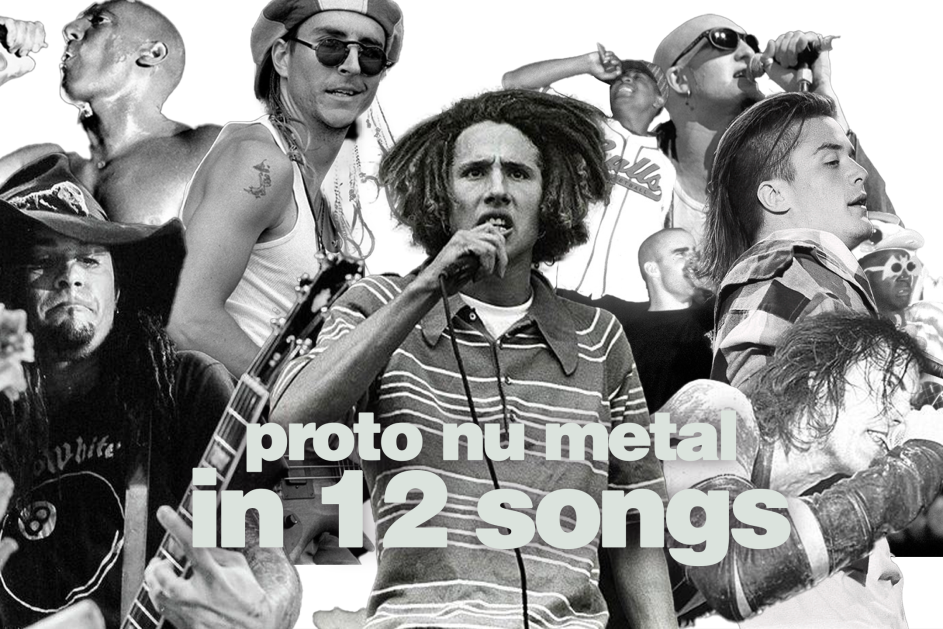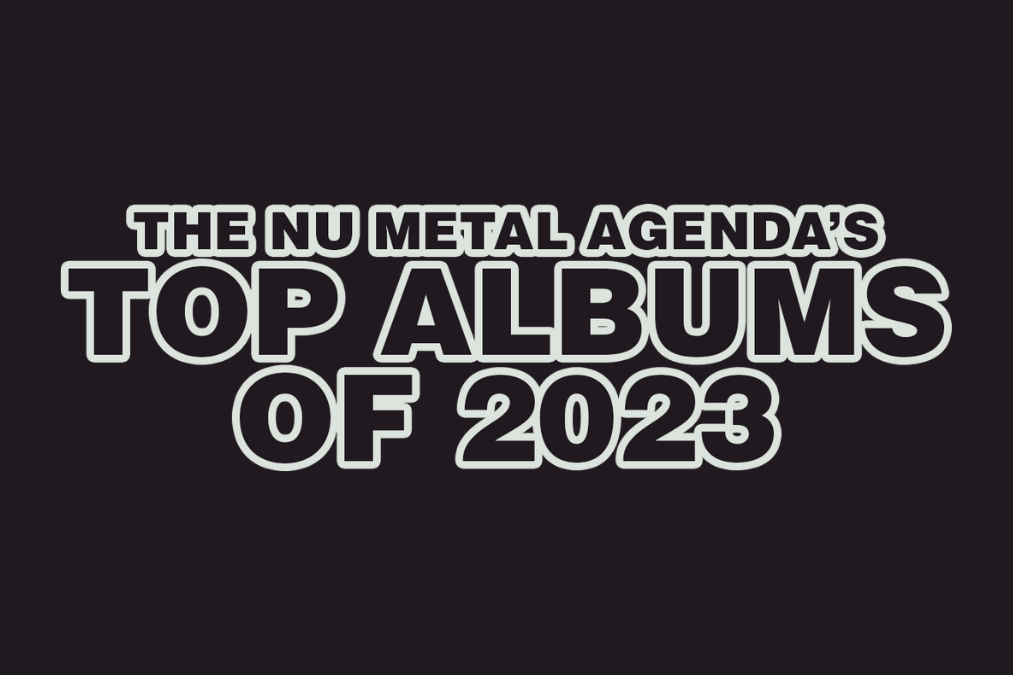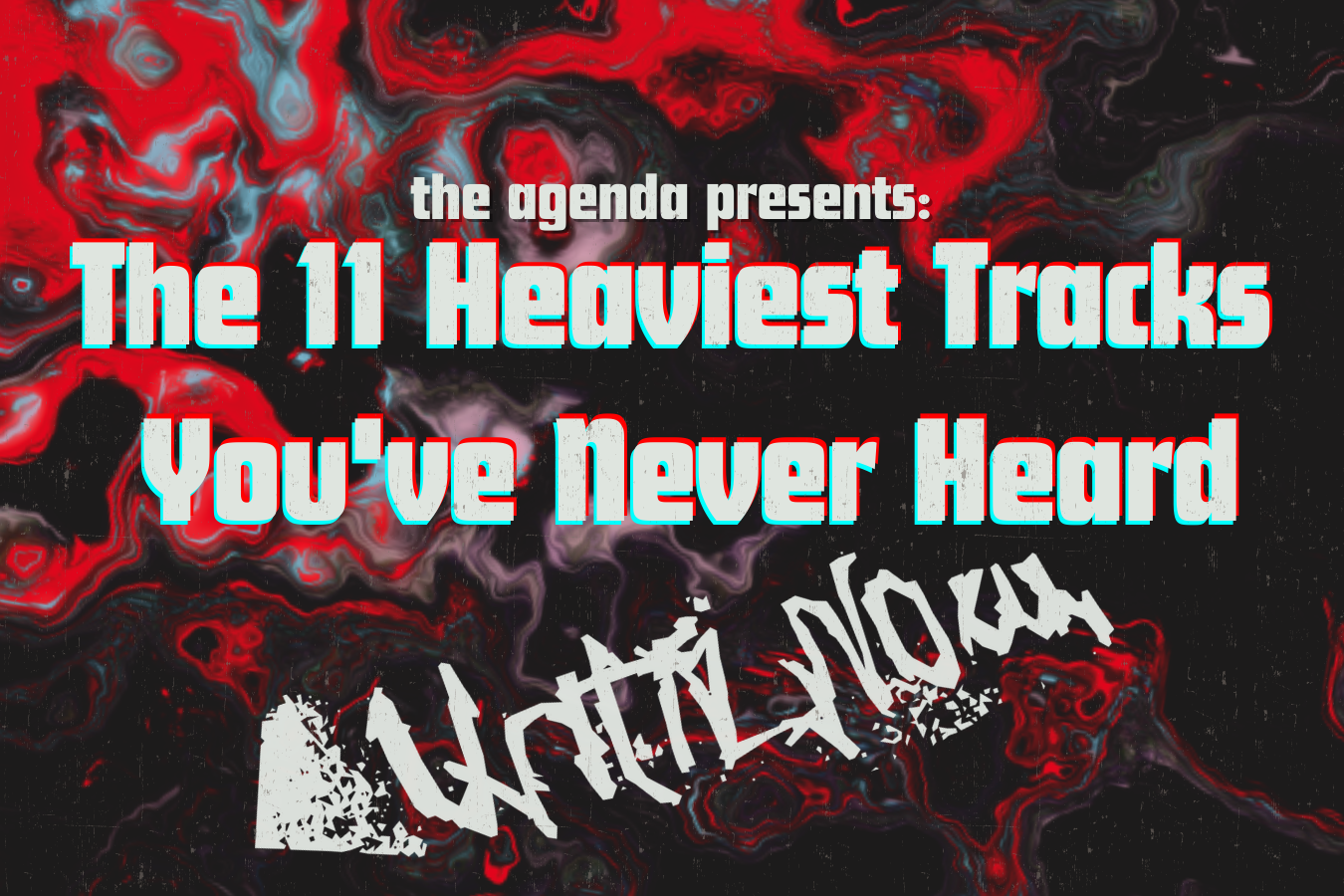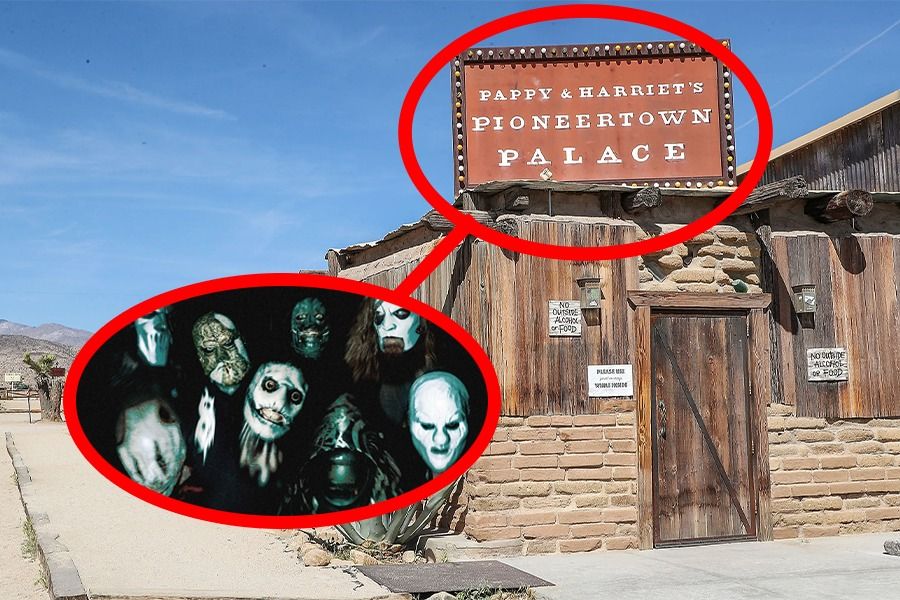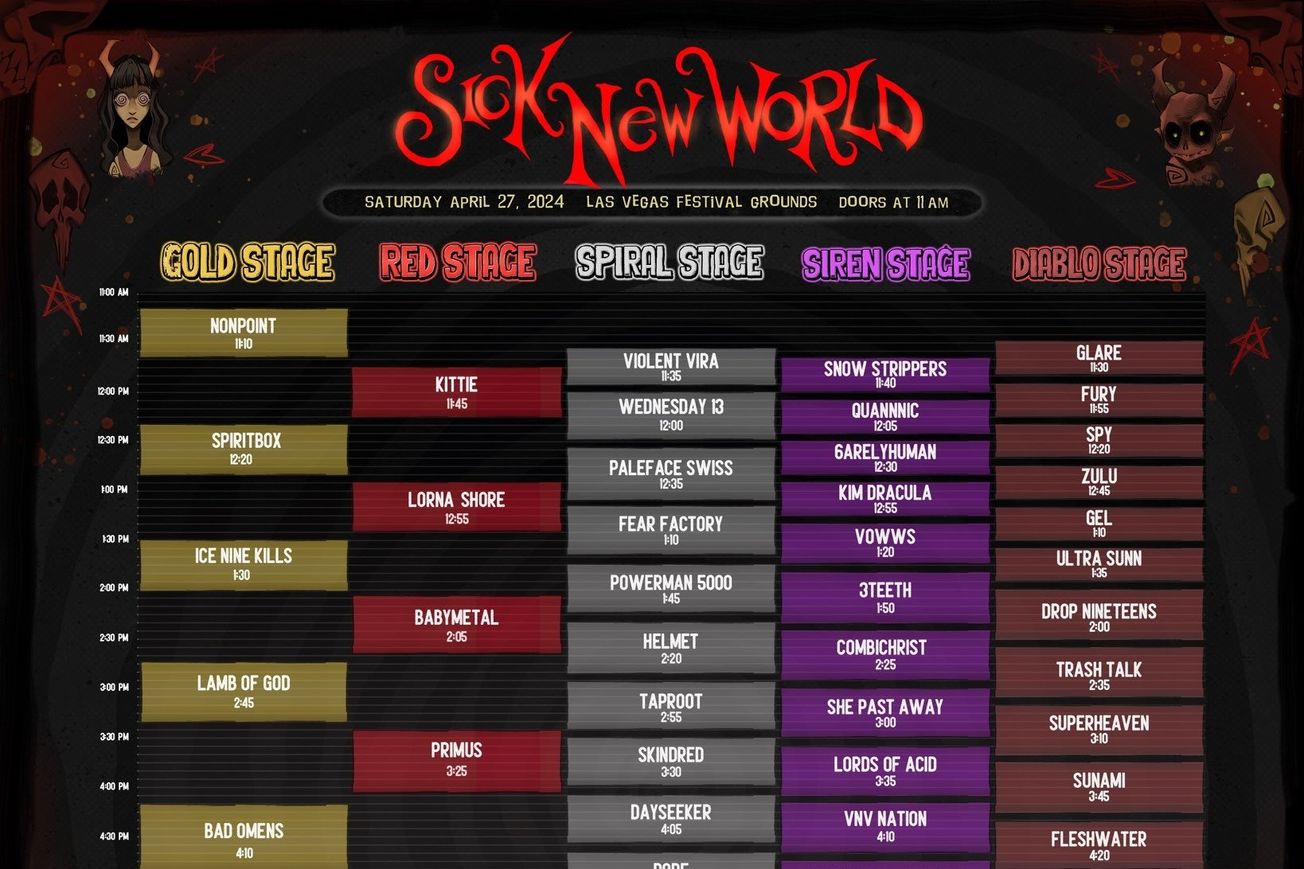The post-Nirvana era seemed to be dominated by angry men rapping and singing about how they hate their dad, their ex-girlfriend, and society, but it wasn’t nu metal…Yet. The proto-nu seeds were planted long before Jonathan Davis’ scatting and Corey Taylor’s screaming put the zeitgeist in a vice grip and refused to let go for the better part of a decade. We here at the Nu-Metal Agenda dug into the past - before JNCO jeans started lining school hallways, before the Attitude Era, before even Korn’s signing to Epic Records - to bring you a timeline of 12 songs that paved the way for nu metal as we know and love it.
Beastie Boys — "No Sleep Till Brooklyn" (1986)
Terra Eyes
When the Beastie Boys transitioned from being a hardcore punk band to a hip hop act, they probably didn’t expect to be one of, if not the very first, crossover acts to bring the rock and rap crowds together, but with the fuzzy riffs and shouted vocals of “No Sleep Till Brooklyn,” there was no way they could avoid it.
Telling a tale of their time on the road, the song, whose title is a play on the Motörhead album No Sleep Til’ Hammersmith, is famous for its iconic guitar sound - done by Slayer guitarist Kerry King - it’s catchy and anthemic chorus, and the raucous energy that exudes from the boys. Though their music lacks the angst and frustration later rap-rock crossovers acts like Limp Bizkit, P.O.D or even Sugar Ray (pre-“Fly” era, of course) would exhibit, it set the tone for how to successfully blend metal guitars and rapped vocals into one cohesive unit.
Anthrax and Public Enemy — “Bring the Noise” (1987)
Holiday Kirk
Some songs get one chance to change the culture, Public Enemy’s “Bring the Noise” got three. Already a totemic, staggering rap single upon original release in 1988, “Bring the Noise” picked up additional resonance when it became the greatest synthesis of rap and metal the world had yet seen. Thrash metal titans Anthrax, who had been shouted out in the lyrics and wore Public Enemy shirts on stage, put their spin on it and released it as a joint single in 1991. Then it struck again when included on the soundtrack to the hit 1999 extreme sports game Tony Hawk’s Pro Skater 2, next to undeniable progeny such as Papa Roach’s “Blood Brothers” and Rage Against the Machine’s “Guerilla Radio.” “Bring the Noise” got to exist in the world it had predicted nearly a decade earlier, sounding like it hadn’t aged a day.
Faith No More — “Epic” (1989)
Cain Borgia
Despite Faith No More’s vocalist Mike Patton having a known disdain for nu-metal, it's hard to not see the band amongst those who laid the groundwork for the world of nu-metal with their mixing and mingling of progressive rock, funk, hip hop, heavy metal.
Take Faith No More’s smash hit “Epic” for example. Debuting on 1989’s The Real Thing, the song was heralded as “style-crunching” by the New York Times with its fun blend of rap and hard rock. The song opens with grandiose fanfare, followed by Patton laying some heat in the verses, into a soulful and catchy as hell chorus. The track’s international success catapulted Faith No More onto the global stage where they caught the attention of many aspiring musicians, including Slipknot’s Corey Taylor, who cites watching them perform the song at the MTV Awards as one of the reasons why he pursued music in the first place. My apologies, Mr. Patton… that proto-nu label isn’t going anywhere anytime soon.
Ministry — “Burning Inside” & ”Thieves” (1989)
Holiday Kirk
When “Burning Inside” b/w “Thieves” was released as the first single from Ministry’s 1989 industrial landmark The Mind is a Terrible Thing to Taste, two distinct strands of nu-metal were germinated at once- the nu-industrial stylings of bands like Static-X and Dope along with the single minded “get the fuck up!” bounce of Limp Bizkit. So prescient was Ministry’s vision that when Static-X and Limp Bizkit covered “Burning Inside” and “Thieves” respectively they could have easily passed as their own original compositions.
Primus — “Too Many Puppies” (1990)
Balloonfm
Too many puppies are being shot in the dark.
Now that’s how you open a track. Cryptic, succinct, strange - even stranger when the weirdest bass tone you’ve ever heard starts encroaching in half-steps. It’s a slice of Primus's Fizzle Fry as a whole, with piercing snares and lofty vocals bouncing in every direction.
What “Puppies” does in particular is flirt with harder genres yet to be defined. The half-step syncopation in the guitar riff is emblematic of what would later define nu & alternative metal. Nothing corroborates this better than Korn's opening track on their ‘94 debut: the ride cymbal opening, the janky riff rise, it’s all there and then some.
The way Claypool zones out in rhythmic lyricism over the melodic stabs over, and over, and over, sounds apathetic but there's a direction. Imagine "Too Many Puppies" with Hybrid Theory era mixing - it’s game over. The track doesn’t need polish though, it’s meant to be abrasive. It is a series of blighted intervals growing louder and louder. A hell circus, a driving purpose, a cathartic pocket of aural nonsense.
That’s nu-metal man. That’s that shit Anberlin just can’t give you.
Depeche Mode — “Enjoy the Silence” (1990)
Holiday Kirk
What nu-metal brought to the table that had been sorely lacking from mainstream metal music was a raw, heart-on-sleeve intensity of emotional expression. The kind of open wound that Depeche Mode songwriter Martin Gore was tapping into on albums like Black Celebration and Music for the Masses albeit with far more restraint and pop-songwriting ability. As nu-metal grew in commercial scale and moved away from the raw sound of early works towards commercially viable songwriting it arrived at Linkin Park’s fusion of Korn intensity with Depeche Mode professionalism, a winning combo that would define the sound of accessible heavy music for a generation. No one makes this case better than Mike Shinoda’s canny 2004 remix of Depeche Mode’s smash “Enjoy the Silence.” A remix that - with just a few loud guitars and some contemporary electronic ornamentation - effortlessly closes the gap between the 1990 original and LP’s own hits such as “In the End” or “Numb.”
Alice In Chains — “Them Bones” (1992)
BaniBoi
In the 90s, grunge terraformed the metal and rock scene, sweeping away the grotesque displays of theatricality that were hallmarks of glam metal and ushering in a new era of alternative music to the spotlight. Alice in Chains rose to top as a band whose sound was not only synonymous with 90s grunge, but also with the foundations for the melodies, riff work, and darkness that would come to follow in nu metal.
“Them Bones” is the first single from their highly acclaimed album Dirt, and serves as a prime example of the grime-filled underbelly of alternative metal. In comparison to all the other grunge acts, Alice in Chains stands out as the heaviest. Their influence can be heard all throughout the metal world, and many in the nu metal scene would point to Alice in Chains as a source of inspiration for their melodies, hooks, and angst.
Nine Inch Nails — “Wish” (1992)
Terra Eyes
“Wish” may predate the nu-metal explosion by a few years, but it perfectly encapsulates the mish-mash of styles that would define the genre for years. The industrial-metal band Nine Inch Nails, fronted by singer, songwriter, and producer Trent Reznor, always experimented with different styles in their music, but “Wish” was a moment of frenetic genius.
The song builds up an atmosphere of dread with a metallic screech and a menacing, kinetic drum beat, overlayed with quick, spoken word style vocals. The mixture of industrial synths and drums with fuzzy, distorted guitars would lay the groundwork for later acts like Static-X, Spineshank, Rammstein and even Linkin Park and Slipknot. The whole thing has an angst and edge to it that just screams “I’m sad, pay attention to me and leave me alone, "an attitude that would evolve into the more misanthropic traits nu metal would become partially known for.
Pantera — “Walk” (1992)
Holiday Kirk
For better or for worse the knuckle dragging lunkhead strain of nu-metal begins here, with the formerly venerated, currently disgraced, Pantera and their mighty “Walk.” Pure testosterone and venom, “Walk” fixes its finger in the face of an enemy and tells them to get packing. “Be yourself, by yourself, stay away from me” growls Phil Anselmo, inventing and rendering about 80% of all Godsmack songs redundant in one line. That energy feels powerful in your fist but when Anselmo polishes off the track with a “Walk on home boy” it might make you think twice about wielding it.
Rage Against the Machine — “Killing In The Name” (1992)
RJ Martin
In some regards, you need not look any further than Rage Against The Machine's fusion of Rap and heavy music as the progenitor of nu-metal, but that would be disingenuous to both their music and the genre that spawned thereafter. “Killing In The Name” is a shining example of the reinvention of rock music in the 1990s. It's one of Rage’s riffiest tunes, with an undoubtedly iconic groove that has transcended a generation to fuel the bounce riffs that become the cornerstone of nu-metal’s sound. Combine those funky grooves with Zac De La Rocha’s signature rapped vocals, and “Killing In The Name” embodies the spirit of what became modern nu-metal - heavy music that was innovative rather than derivative. ]
Helmet and House of Pain — “Just Another Victim” (1993)
Holiday Kirk
It’s actually shocking to consider how many of nu-metal’s pieces fell into place here. “Just Another Victim” - from the frequently referenced yet seldom seen Judgement Night soundtrack - unites alt-metal heavyweights Helmet with “Jump Around” architects House of Pain for a track that straddles the line between proto-nu and the real deal so precisely that the two acts were probably one full album team up away from inventing the whole genre. As is, you’ll have to settle for hearing echoes of everyone from Papa Roach to Limp Bizkit (who would eventually count House of Pain’s own DJ Lethal amongst its members) in its four minutes and 21 seconds.
Tool — “Sober” (1993)
Hemotype
Released as their debut single in 1993, “Sober” by Tool predates the nu-metal era by a hair and makes you wonder if they would have gone in a different direction if they'd debuted later. Opening with a punchy bassline, the track oozes with angst and seamlessly combines feelings of loneliness with a catchy, hooky groove. Maynard James Keenan's dramatic vocals create an uneasy atmosphere, while the instrumentation matches and opposes this feeling at the same time. “Sober” has shrieking, heavy guitars with a groovy rhythm section. These same musical dynamics and traits can be seen in many nu-metal bands to follow. Bands such as Chevelle and Mudvayne have cited the group as inspiration, and in 2007, Serj Tankian even joined Tool live to do a cover of the song. "Sober," and much of Tools early work, planted a musical seed in the nu-metal genre.


